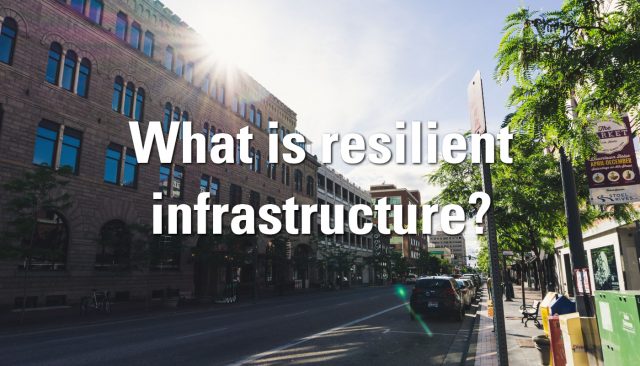Infrastructure Week, which a US non-profit organization of the same name holds each May, is a week of education and advocacy, bringing together elected leaders, businesses, workers, and citizens to raise awareness and push toward the common goal of improving the nation’s infrastructure. The organization provides resources including participation guides for cities, ideas for events to hold, and shareable graphics for spreading awareness. What messages are they trying to spread? Infrastructure Week notes that:
In fact, the American Society of Civil Engineers gives the infrastructure system in the country a D+ grade in its latest report card, which breaks down the system into everything from roads (D) to transit (D-), bridges (C+), and more.
While the non-profit raises awareness, those in charge have not tended to follow through on plans to discuss these infrastructure issues. In recent years, the idea of “Infrastructure Week” when it comes from the current administration “has come to promise five business days of drama and discussion about almost anything other than infrastructure,” according to a CityLab story published in 2019. In May 2019, a planned discussion about a possible $2 trillion package disintegrated before it began.
Furthermore, organizations like Transportation for America believes the priorities are backward:
Here’s a different take on #InfrastructureWeek: Why give more money to the same people who have been neglecting basic maintenance in order to build more things we can’t afford to maintain? https://t.co/yiAEedQOop pic.twitter.com/kZJxId4kdJ
— Transportation for America (@T4America) May 13, 2019
“To meet our current and future infrastructure needs, we must increase accountability, prioritize repair, and guarantee results with our current spending,” the organization suggests, instead of simply increasing funding for building more things we can’t afford to maintain.

What is a resilient city? Resilient cities create systems that sustain, adapt, and grow as future uncertainties unfold, including emergency situations or other daunting challenges like climate change. A city becomes resilient by offering amenities and resources that draw people to live and work there. With this structure in place, a city can withstand unexpected shocks and stresses more easily, and bounce back from them quickly.
In recent years, the United Nations declared October 31 World Cities Day, and the 2018 theme was Building Sustainable and Resilient Cities. The messaging is that “Cities need support to become resilient and develop their capacity to absorb the impact of hazards, protect and preserve human life and limit damage to and destruction of public and private assets while continuing to provide infrastructure and services after a crisis.”
There are many other organizations and events helping cities reach these goals. In 2018, Barcelona hosted Resilience Days, “the global platform for discussion and learning between leading cities and international organizations working to build more resilient communities all over the world.” The goal of the event was to develop and foster new working partnerships to help collectively face the challenges that face our cities, even if the cities have different infrastructure development needs.
For example, while two cities may have different needs for preparing for floods—a dike on a river versus an ocean archipelago—they can both find solutions that make them resilient to the threat of water. Likewise, a city facing frequent brownouts or blackouts can find alternate sources of energy to make them resilient to power outages—which could include wind farms, solar-powered street lights, hydroelectric dams, or other renewable energy sources.
The National League of Cities recently released their State of Cities 2019 report, analyzing more than 150 annual speeches given by mayors of cities, towns, and villages across the US. Of the top-10 issues, infrastructure ranked second, with 57% of mayors addressing related issues this year.
“While Washington talks, mayors take action. As the government that’s closest to the people, mayors work every day to reach across the aisle, bring people together, and find solutions that help our residents. Whether you’re talking about infrastructure or climate change, mayors know that local action is critical to making our cities, towns and villages more sustainable and economically competitive. The State of the Cities report shows that mayors are addressing these issues head-on and are planning for the long-term health and wellbeing of their communities.” – NLC President Karen Freeman-Wilson, mayor of Gary, Indiana, May 22, 2019, press release.
Within the State of Cities report, many of these principles are clearly on the minds of many local governments. The most popular subtopic, part of the health and human services category, was parks and recreation with 63% of mayors prioritizing the improvement of their facilities as a means of improving residents’ health and way of life. Meanwhile, energy and environmental issues were the fourth-most common topic, with 41% of mayors prioritizing subtopics like climate change, clean energy, local reduction of air pollution, and municipal recycling.
Where can you start? There are many ways to look at resiliency, but here are a few ideas to get started:
From the United Nations to local mayors, the way we are thinking about resiliency, sustainability, and future-proof infrastructure is changing. Awareness campaigns like Infrastructure Week are a great opportunity to keep the conversation going.
